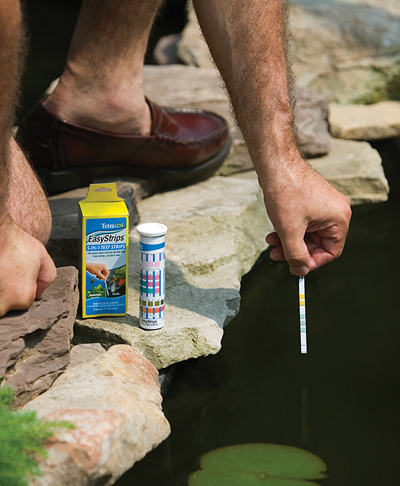Testing pond water is crucial for maintaining a healthy and thriving aquatic environment. By regularly monitoring the water quality, you can ensure the well-being of your fish, plants, and other pond inhabitants. In this guide, we will discuss the importance of testing pond water, the various parameters to test for, and the different methods available for conducting water tests.
Why Test Pond Water?
Testing pond water helps you understand the overall health of your pond ecosystem. It allows you to detect any imbalances or issues that could harm your fish or plants. By monitoring key parameters such as pH, ammonia levels, nitrate levels, and oxygen levels, you can take proactive measures to maintain a stable and healthy environment for your pond inhabitants.

Credit: www.pondtrademag.com
Parameters to Test For
There are several key parameters that you should test for when assessing the water quality of your pond. These include:
- pH levels
- Ammonia levels
- Nitrite levels
- Nitrate levels
- Oxygen levels
- Temperature
Testing Methods
There are various methods available for testing pond water, ranging from simple test strips to more advanced electronic testers. Here are some common testing methods:
| Testing Method | Pros | Cons |
|---|---|---|
| Test Strips | Easy to use, quick results | Less accurate than other methods |
| Liquid Test Kits | Accurate results, test multiple parameters | Requires more time and effort |
| Electronic Testers | Highly accurate, digital readings | More expensive upfront cost |

Credit: webbsonline.com
How to Test Pond Water
Here is a step-by-step guide on how to test pond water using a liquid test kit:
- Fill a clean test tube with pond water up to the designated line.
- Add the appropriate reagents to the test tube according to the instructions.
- Cap the test tube and shake it gently to mix the reagents with the water.
- Wait for the specified amount of time for the color to develop.
- Compare the color of the water to the color chart provided with the test kit to determine the parameter levels.
- Record the results and take any necessary actions based on the findings.
Interpreting Test Results
Understanding the test results is essential for making informed decisions about your pond. Here are some general guidelines for interpreting common water parameters:
- pH levels should ideally be between 6.5 and 8.5 for most pond fish and plants.
- Ammonia levels should be at or near zero, as high levels can be toxic to fish.
- Nitrite levels should also be kept low, preferably at zero.
- Nitrate levels should be below 40 ppm to prevent algae growth.
- Oxygen levels should be sufficient to support aquatic life, typically above 5 ppm.
Regular Testing and Maintenance
To ensure the long-term health of your pond, it is essential to conduct regular water tests and take appropriate actions based on the results. By monitoring the water quality and making necessary adjustments, you can create a balanced and thriving ecosystem for your pond inhabitants.
Remember to test your pond water at least once a week, especially during the warmer months when biological activity is at its peak. Additionally, be observant of any changes in water clarity, fish behavior, or plant health, as these can also indicate potential issues in your pond.
Conclusion
Testing pond water is a fundamental aspect of maintaining a healthy and sustainable pond ecosystem. By monitoring key parameters and taking proactive measures, you can create an optimal environment for your fish, plants, and other pond inhabitants to thrive. Regular testing, proper interpretation of results, and timely maintenance are essential for the long-term success of your pond.
Remember, a well-balanced pond is a happy pond!



